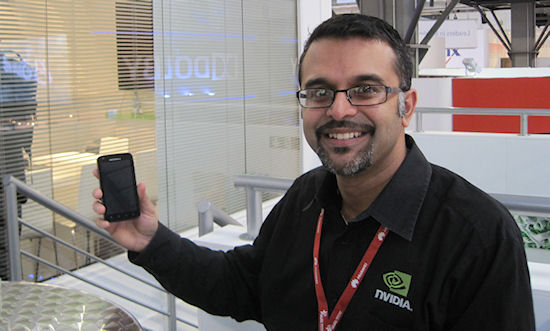With great power comes great responsibility
The morning after NVIDIA Tegra boss Mike Rayfield blogged about the next-generation SoC he had previously implied he would launch at MWC, we spoke to Ujesh Desai (pictured holding his new Motorola Atrix), product marketing VP at NVIDIA, to get his perspective on the announcement.
Having recently spoken to Freescale about the bad habits of the PC industry being repeated in the embedded market, we suggested that moving up to quad-core was more of a marketing gimmick than a response to any market demand, and that devices would pay the price in terms of battery life for this core one-upmanship.
Desai's first rebuttal was simple: "quad-core Kal-El will have lower power consumption than dual-core Tegra 2." This will presumably come about from a refinement of the overall architecture and software, although our initial assumption that it would be manufactured on the 28nm process appears to have been incorrect.
But even if this is the case, Kal-El could presumably have been even lower power if it had only been dual-core. We mentioned what TI had told us about sticking with dual-core for OMAP 5 due to that being the optimal balance between performance and power. "I'd say the same if I was TI," countered Desai, adding: "OMAP5? Ship OMAP4 first please." Miaow!
We pressed Desai on the need for four cores and he pointed to the ease of porting Xbox 360 games over to future Kal-El devices as an example and said: "people are going to come up with more stuff to do with a mobile device."
We concluded by asking why NVIDIA is only announcing a roadmap codename, rather than an official product name such as Tegra 3, especially since he confirmed to us that NVIDIA expects to see Kal-El in tablets by this August and in phones before the end of the year. "We've only had it back for 12 days," said Desai, "and we thought it was a bit too early for a formal launch - we don't want to do paper launches."
So if you blog about it, rather than publish a press release, then it's not a ‘launch', it seems. But semantics aside, we understand Desai's reluctance to make too much noise about Tegra 3 - or whatever it ends up being called - when there was such a long delay between the launch of Tegra 2 and its appearance in devices.















